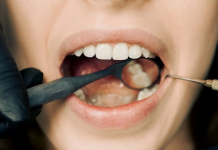Sugar, the sweetest culprit, hides in plain sight within our daily meals, cleverly disguised in various forms. We often think of sugar as the white grains we spoon into our morning coffee, but that’s merely a fraction of the story. This article aims to pull on this sweet deception, revealing how hidden sugars influence our blood glucose levels and, ultimately, our health.
The Hidden Sugar Story
Sugar goes by many names in the world of nutrition, such as fructose, lactose, maltose, and more. These are often found in processed foods and drinks that we consume daily. Manufacturers have become skilled at hiding these sugars in their products, leaving consumers unaware of the true sugar content.
It’s easy to see how one might exceed their daily recommended intake of sugar without even realizing it. One can of soda, for example, may contain up to 10 teaspoons of sugar. Consuming these hidden sugars regularly can wreak havoc on our blood glucose levels, leading to a myriad of health issues.
The Many Faces of Hidden Sugars
Understanding the different forms of hidden sugars is key in reducing their consumption. Sugar is not always listed plainly as “sugar” on nutrition labels. It often wears a disguise, such as dextrose, sucrose, high fructose corn syrup, malt syrup, and fruit juice concentrate, among others. There are actually over 60 different names for sugar used on food labels.
These sugars can lurk in the most unexpected places. For instance, your ‘healthy’ breakfast cereal, whole-grain bread, flavored yogurt, salad dressing, tomato sauce, and even your favorite savory snack might be hiding more sugar than you expect. Becoming familiar with these pseudonyms and checking food labels meticulously can help you spot and avoid these stealthy sweeteners.
Blood Glucose and Hidden Sugars
The relationship between sugar and blood glucose is straightforward: when you consume sugar, your blood glucose levels rise. This prompts your pancreas to produce insulin, which helps your cells absorb glucose and convert it into energy. However, constant exposure to high levels of sugar can lead to insulin resistance, a precursor to Type 2 diabetes.
Hidden sugars in our diets can keep our blood glucose levels consistently high, causing our bodies to produce more insulin than necessary. Over time, this may result in an overworked pancreas, insulin resistance, and eventually, diabetes.
Impact of High Blood Glucose
High blood glucose levels, also known as hyperglycemia, can have serious health implications if left unchecked. Short-term effects include frequent urination, increased thirst, and fatigue. However, chronic high blood glucose can lead to more severe such as heart disease, stroke, kidney disease, and nerve damage. It’s also worth noting that high blood glucose levels can impair the body’s immune function, making it harder to fight off infections.
Moreover, elevated blood glucose over time can lead to diabetic retinopathy, a leading cause of blindness in adults. It can also cause diabetic neuropathy, resulting in numbness, tingling, or even severe pain in the hands and feet. Understanding these potential risks underscores the importance of maintaining healthy blood glucose levels.
The Elderly and Blood Glucose
In the aging population, maintaining stable blood glucose levels becomes even more critical. A commonly asked question is, what is normal blood sugar for seniors?
A healthy fasting blood sugar level for seniors should be between 70-130 mg/dL before meals and less than 180 mg/dL two hours after starting a meal. However, these values can vary depending on an individual’s overall health.
Regular monitoring of blood sugar levels, combined with a balanced diet, can help seniors maintain healthy blood glucose levels. Avoiding foods with hidden sugars is a significant part of this dietary strategy.
The Role of Natural Supplements
Natural supplements can play a crucial role in maintaining balanced blood glucose levels. Companies like PureHealth Research offer a variety of natural supplements that can complement a healthy diet and lifestyle. Remember, though, that these supplements should not replace a balanced, nutritious diet but serve as an additional tool in your health arsenal.
Practical Tips to Cut Down on Sugar
Reducing your sugar intake doesn’t have to be a daunting task. Here are some practical steps you can take:
Swap Sugary Drinks: Replace sugary drinks like soda, energy drinks, and sweetened coffee with water, herbal tea, or homemade smoothies.
Choose Whole Fruits Over Juice: Whole fruits have fiber that slows down the absorption of sugar into your bloodstream, preventing sudden spikes in blood glucose levels.
Limit Processed Foods: These often contain added sugars. Opt for fresh, whole foods whenever possible.
Use Natural Sweeteners: Instead of refined sugar, try using natural sweeteners like stevia or monk fruit extract. But remember, moderation is key even with these healthier alternatives.
Start Reading Food Labels: This is the best way to know what’s really in the food you’re buying. The higher up sugar (or one of its aliases) is on the ingredients list, the more sugar the product contains.
Conclusion
In this journey of unraveling the sweet deception of hidden sugars, we’ve learned not only about their many disguises but also about their significant impact on our blood glucose levels and overall health. We’ve seen how hidden sugars can lead to high blood glucose and the cascade of health issues that can follow, including heart disease, stroke, kidney disease, and nerve damage.
Hidden sugars may be everywhere, but armed with knowledge and determination, we can make choices that promote rather than compromise our health. It’s not just about living longer – it’s about living better.









































